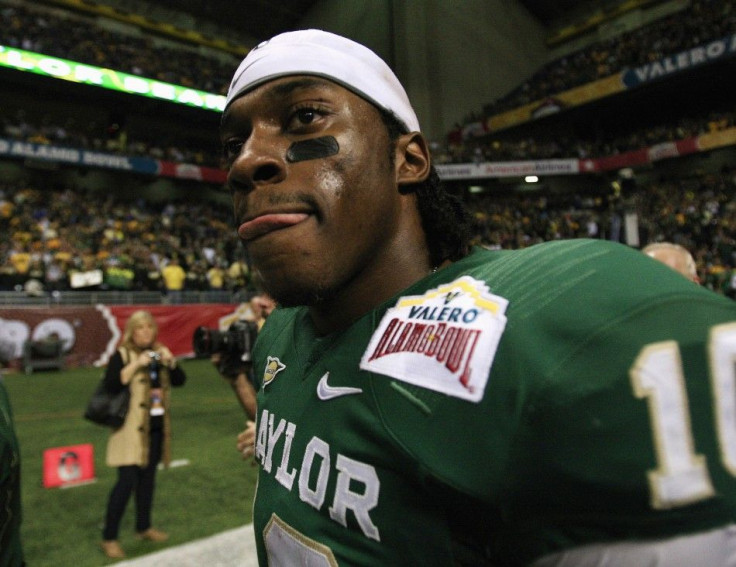2012 NFL Combine: The Most Overrated Week in Football

Each year, hundreds of collegiate athletes attend the NFL Scouting Combine in hopes of improving their draft stock.
Coaches and front office executives place a lot of emphasis on this weeklong event, and it has a big influence on whom teams select in the draft.
Why is there so much emphasis placed on the Combine?
It seems these days that equal weight is placed on what players do at the Combine as compared to what they've done in college.
Of all the physical tests, maybe the most emphasis is placed on the 40-yard dash. For some reason, the sprint has become a measuring stick for many skill position players.
Sure, the dash can be a good tool in evaluating a player's speed. You certainly wouldn't want to draft a wide receiver that couldn't run it in under five seconds.
In 2008, Chris Johnson blew away the competition with a record-tying 4.24 40-yard dash. The running back out of East Carolina was expected by many to be a second-round pick before the Combine.
Johnson's performance helped him get drafted by the Titans in the first round, and he is now one of the best running backs in the NFL.
But sometimes the opposite happens.
Jerry Rice famously ran the 40-yard dash in 4.6 seconds at the 1985 Combine. Two wide receivers were drafted ahead of Rice, who went on to become the greatest player at his position in the history of the NFL.
Perhaps, if teams were not as focused on Rice's poor performance at the Combine, he would have been selected earlier.
Many players who post extremely impressive numbers at the Combine don't make it in the league.
Tye Hill is tied for the fourth best dash time since 2006. That year, the cornerback out of Clemson was drafted 15th overall by the Rams. After having a solid rookie season, Hill's career was never the same.
He only played four games in 2010 and went unsigned for all of last season.
Yamon Figurs, the top 40-yard dash performer in 2007, is also out of the league.
The bench press workout is even worse at predicting success in the NFL.
Each participant must see how many times they can bench press 225 pounds. Offensive linemen, in particular, usually do well at this event.
In 2007, 11 players were able to complete the lift at least 34 times. Eight of them are no longer in the NFL, including Tank Tyler of N.C. State, who performed the best with 42 reps.
History has shown that the amount of weight an athlete can bench press often has no correlation with his on-field performance.
At the NBA Combine, basketball players must bench press 185 pounds instead of 225. The year Kevin Durant was drafted, he couldn't complete the lift once. This led many people to question whether or not the forward was strong enough to compete at a high level in the pros.
A few years later, Durant is now one of the best players in the league.
The Scouting Combine is certainly helpful for executives who must evaluate players, but it shouldn't take precedence over the way athletes perform during games. Too many players have excelled in Combine drills, but failed to get the job done in the NFL.
It's important to remember--for every Chris Johnson, there's a Tye Hill.
© Copyright IBTimes 2024. All rights reserved.












